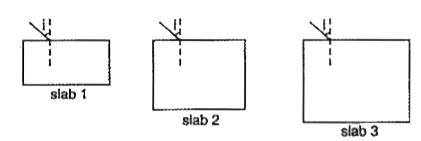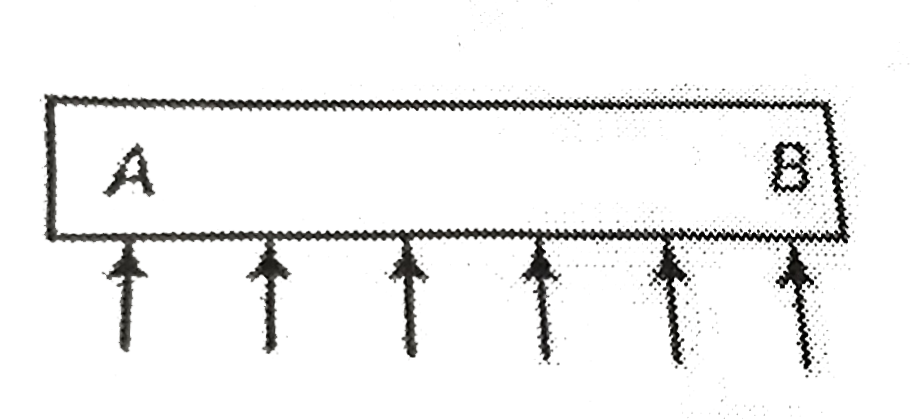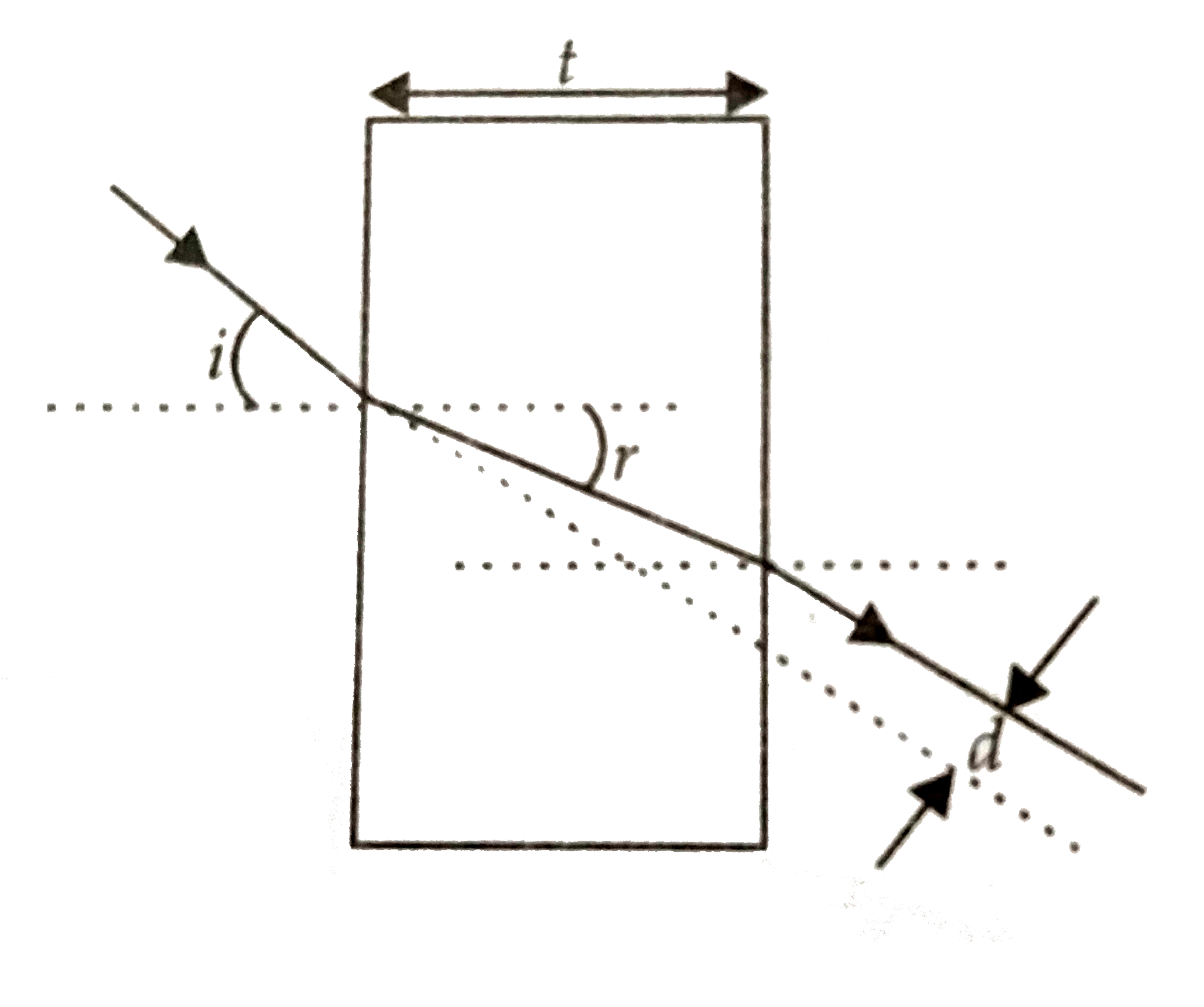Rays of light fall on a glass slab (μgtl)as shown in the figure. If μ at A is maximum and at b it is minimum, then what will happen to these rays?

they will tilt towards A
they will tilt towards B
they will not deviate
there will be total internal reflection
The correct Answer is:C
Step by step video, text & image solution for Rays of light fall on a glass slab (mugtl)as shown in the figure. If mu at A is maximum and at b it is minimum, then what will happen to these rays? by Physics experts to help you in doubts & scoring excellent marks in Class 12 exams.
Topper's Solved these Questions
- BOOK - NARAYNACHAPTER - RAY OPTICS AND OPTICAL INSTRAUMENTS EXERCISE - CUQ (LENS MAKER’S FORMULA)4videos
RAY OPTICS AND OPTICAL INSTRAUMENTS
- BOOK - NARAYNACHAPTER - RAY OPTICS AND OPTICAL INSTRAUMENTS EXERCISE - CUQ (PRISM)8videos
RAY OPTICS AND OPTICAL INSTRAUMENTS
- BOOK - NARAYNACHAPTER - RAY OPTICS AND OPTICAL INSTRAUMENTS EXERCISE - CUQ (REFLECTION)9videos
RAY OPTICS AND OPTICAL INSTRAUMENTS
- BOOK - NARAYNACHAPTER - NUCLEI EXERCISE - ASSERTION & REASON5videos
NUCLEI
- BOOK - NARAYNACHAPTER - SEMI CONDUCTOR DEVICESEXERCISE - Level-II (H.W)36videos
SEMI CONDUCTOR DEVICES
Similar Questions
A ray of light falls on three glass slabs of the same material at the same angle of incidence. In which case, is the lateral displacement of the emergent ray of light (a) maximum
(b) Minimum
 View Solution
View SolutionA ray of light is falling on a glass sphere of μ=√3 such that the incident ray and that the incident ray and the emergent ray, when produced, intersect at a point on the surface of the sphere. Find the value of angle of incidence( in degree).
View Solution
Knowledge Check
- Question 1 - Select One
Rays of light fall on a glass slab (μ>1) as shwon in figure. If μ at A is maximum and at B it is minimum, then what will happen to these rays?
 AThey will tilt towards ABThey will tilt towards BCThey will not deviateDThere will be total internal reflection
AThey will tilt towards ABThey will tilt towards BCThey will not deviateDThere will be total internal reflection - Question 2 - Select One
Rays of light fall perpendicularly on a glass slab (n>1) as shown in figure. If n at A is maximum and n at B is minimum, then the rays will
 Atilt towards ABtilt towards BCnot deviateDundergo total internal reflection
Atilt towards ABtilt towards BCnot deviateDundergo total internal reflection - Question 3 - Select One
A ray of light is incident on a parallel-sided glass slab as shown in the figure. The angle of refraction for this ray of light is likely to be :
 A60∘B33∘C57∘D30∘
A60∘B33∘C57∘D30∘
A ray of light falls on a glass slab at an incident angle of 45∘ and refracted at angle of 30∘.
What is the refractive index of the glass with respect to air ?View SolutionA ray of light falls on a glass slab at an incident angle of 45∘ and refracted at angle of 30∘.
What is the measure of the angle of emergence 'e' ?View SolutionA ray of light strikes a glass slab (R.l. = μ) of finite thickness t. The emerging light is
View SolutionA ray of light falls on a glass slab making an angle of 45∘ with normal. The emergent ray makes the same angle with normal. It shows that
View SolutionA rays of light is incident on a thick slab of glass of thickness t as shown in figure. The emergent ray is parallel to the incident ray but displaced sideways by a distance d. If the angles are small then d is
 View Solution
View Solution

